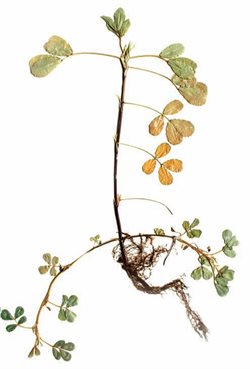People down the ages have always loved beautiful flowers, but the focus of plants’ importance has changed over the years, writes Ros Dodd. Once they were prized for their medicinal and culinary qualities rather than their looks; today we cultivate them more for decorative purposes, as well as to attract waning wildlife back into our gardens.
Art has charted our relationship with plants and flowers, and the Cadbury Research Library houses an impressive collection, showing the development and evolution of botanical illustration from its earliest days in the 15th-century to 20th-century interpretations.
The collection is used regularly by researchers such as Elaine Mitchell, who is studying at the University for a PhD in ‘Gardens, gardening and horticulture in 18th-century Birmingham’.
 ‘My research aims to bring into view a perspective of Birmingham almost completely absent from the current perspective,’ she says. ‘It brings to light the huge contribution Birmingham made to the development of gardening and horticulture. I have been able to make use of material in the Cadbury Research Library’s Special Collections, such as the two volumes of Elizabeth Blackwell’s Curious Herbal, which are wonderful – the illustrations are so fresh.’
‘My research aims to bring into view a perspective of Birmingham almost completely absent from the current perspective,’ she says. ‘It brings to light the huge contribution Birmingham made to the development of gardening and horticulture. I have been able to make use of material in the Cadbury Research Library’s Special Collections, such as the two volumes of Elizabeth Blackwell’s Curious Herbal, which are wonderful – the illustrations are so fresh.’
In the 15th century, ‘herbals’ were practical manuals describing recipes and applications for utilitarian, mostly medicinal plants. To aid plant identification, herbals were often illustrated with woodcuts, produced soon after the advent of printing. On display is a rare second edition of Veldner’s Herbarius Latinus (circa 1485), intriguingly heavily annotated by its various owners.
Florilegium, meaning ‘flower gathering’, came into its own during the 17th and 18th centuries, with greater significance being given to the illustrations than the text of books – a reflection that flowers were being cultivated for their decorative qualities and not only for their medicinal and culinary uses.
Illustration, which in the herbal tradition had been a means of distinguishing one plant from another, took on the role of analytic tool, reaching its height in the mid-18th century with the sumptuous – but inaccurate – illustrations in Robert John Thornton’s illustration of Carl Linnaeus’s classification of plants, Temple of Flora (1807). Later works began to adopt a more scientific approach to botanical illustration.
Botanical illustrations were used for decorative purposes as well as scientific study – to enhance the quality and value of an object. This can be seen in the finely embroidered textile cover of a Book of Psalms and the beautiful cartouches of roses in the lacquered binding of a Persian manuscript.
Botanical Art, in the Muirhead Tower Atrium on the main University campus, runs until 4 October. Open weekdays 9.00am–6.00pm.